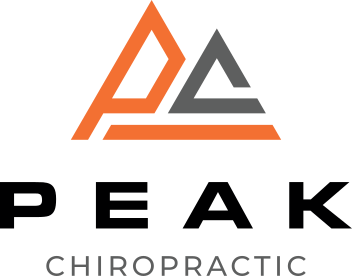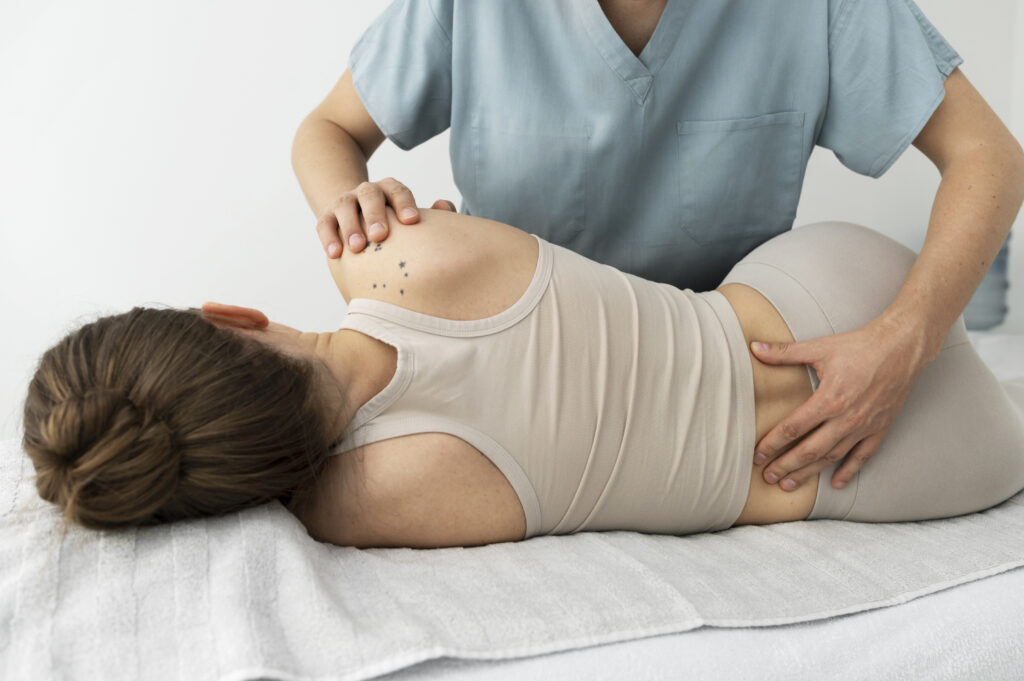When you face a sports injury, the path to recovery can feel overwhelming. You might think rest is enough, but effective strategies go far beyond that. The R.I.C.E. method is a good starting point, yet innovative therapies and nutrition also play vital roles in your healing process. It's not just about the physical aspects; your mindset can greatly impact how quickly you bounce back. Curious about what specific techniques can accelerate your recovery and get you back in the game? Let's explore these essential secrets together.
Understanding Sports Injuries
When you're active in sports, understanding injuries is fundamental to your performance and well-being. Whether you're a weekend warrior or a seasoned athlete, knowing the types of injuries you might encounter can help you prevent them and respond effectively when they occur.
Sports injuries typically fall into two categories: acute and chronic. Acute injuries happen suddenly, often due to a specific event, like twisting an ankle during a game or colliding with another player. Symptoms are usually immediate and can include pain, swelling, or bruising. You'll want to recognize these signs quickly to avoid further damage.
On the other hand, chronic injuries develop gradually over time, often due to repetitive stress or overuse, like tendonitis in the elbow from constant throwing. These injuries might start as a mild discomfort but can worsen if ignored. It's important to listen to your body and address any persistent pain before it escalates.
Understanding risk factors is another key element. Poor conditioning, improper techniques, and inadequate warm-ups can increase your chances of injury. You should always prioritize preparation, including strength training and flexibility exercises, to enhance your resilience.
Finally, knowing when to seek professional help is essential. If an injury doesn't improve with rest or worsens, don't hesitate to consult a medical professional.
The R.I.C.E. Method
When you experience a sports injury, knowing how to apply the R.I.C.E. method can make a big difference in your recovery.
Rest and recovery are essential, while proper ice application, compression, and elevation can help reduce swelling and pain.
Let's explore how each of these steps can aid in your healing process.
Rest and Recovery
Injuries can be frustrating, but the R.I.C.E. method—Rest, Ice, Compression, and Elevation—offers a straightforward approach to recovery.
When you're injured, rest is your first priority. Giving your body time to heal is fundamental for a swift recovery. Don't push through the pain; it's important to listen to your body and take a break from sports or strenuous activities.
After resting, ice can help reduce swelling and numb the pain. While this step comes later, remember that rest lays the foundation for effective recovery. You should avoid putting weight on the injured area, allowing your body to focus on healing.
Compression plays an essential role, too. It involves wrapping the injured area with an elastic bandage to minimize swelling. This step works best when combined with rest, ensuring the affected area isn't overstressed.
Finally, elevate the injured limb above heart level to further decrease swelling.
Combining these elements of the R.I.C.E. method not only speeds up your recovery but also sets you up for a stronger comeback. Prioritize rest, and you'll be on your way to feeling better in no time.
Ice Application Techniques
Applying ice effectively is essential for reducing swelling and alleviating pain after an injury. The R.I.C.E. method—Rest, Ice, Compression, Elevation—highlights the importance of icing during recovery.
Start by applying ice as soon as possible after your injury. Use a cold pack, ice bag, or even a bag of frozen vegetables wrapped in a thin towel to prevent frostbite.
Aim for 15 to 20 minutes of ice application every hour, especially during the first 48 hours post-injury. Make sure to check your skin regularly for any signs of excessive cold or discomfort. If your skin becomes overly red or numb, remove the ice immediately.
Alternate between ice and rest, ensuring you give your body time to heal. If you're in a situation where you can't use a cold pack, cool water immersion can also be effective.
Just remember not to apply ice directly to the skin, as this can cause damage. By following these ice application techniques, you'll boost your recovery process and get back to your favorite activities more quickly.
Compression and Elevation
Compression and elevation play vital roles in the recovery process after an injury. When you're dealing with swelling, applying a compression bandage can help limit that swelling and provide support to the injured area. Make sure the bandage isn't too tight; you want to apply enough pressure to control swelling without cutting off circulation. A good rule of thumb is to check for signs of numbness or increased pain.
Elevation is equally important. By raising the injured area above your heart, you allow gravity to assist in reducing swelling. This technique helps improve blood flow and encourages fluid to drain away from the injury site. Ideally, you should keep the injured limb elevated for 48 hours post-injury.
Combining compression and elevation with ice (as part of the R.I.C.E. method) enhances your recovery. Together, these techniques can considerably reduce pain and accelerate healing.
Remember to follow up with gentle movement and strengthening exercises as advised by a medical professional to regain full functionality. By prioritizing compression and elevation, you're taking essential steps toward a faster recovery and getting back to your favorite activities.
Innovative Therapy Options
When it comes to speeding up your recovery, innovative therapy options like cryotherapy and hyperbaric oxygen therapy can make a real difference.
These techniques focus on enhancing healing and reducing inflammation, helping you get back to your game faster.
Let's explore how these therapies can benefit your recovery process.
Cryotherapy for Recovery
Cryotherapy has taken the sports recovery world by storm, offering athletes a cutting-edge way to bounce back after intense workouts or injuries. This innovative therapy involves exposing your body to extremely cold temperatures for a short period, typically in a cryo chamber, which can help reduce inflammation and speed up recovery.
When you undergo cryotherapy, your skin temperature drops, triggering a natural response in your body. This constricts blood vessels, reducing swelling and pain in affected areas. As you leave the chamber, your blood vessels warm up, promoting increased blood flow and delivering oxygen and nutrients to your muscles.
You'll often find that soreness decreases and mobility improves greatly after just a few sessions.
Many athletes swear by cryotherapy not just for injury recovery but also for performance enhancement. It can help improve sleep quality, boost your mood, and increase energy levels, making it a popular choice among those looking to optimize their training.
If you're seeking an effective way to recover faster and stay at the top of your game, consider incorporating cryotherapy into your routine. It could be the game-changer you've been searching for!
Hyperbaric Oxygen Therapy
Hyperbaric Oxygen Therapy (HBOT) is gaining traction as a groundbreaking approach to sports injury recovery and overall wellness. This innovative therapy involves breathing pure oxygen in a pressurized environment, which notably boosts the amount of oxygen your blood can carry.
By doing this, HBOT accelerates healing, reduces inflammation, and promotes tissue regeneration.
When you undergo HBOT, you're not just relaxing in a chamber; you're enhancing your body's natural healing processes. Many athletes have reported faster recovery times from injuries like strains, sprains, and even fractures. The increased oxygen levels can also help combat fatigue, allowing you to return to your training regimen quicker.
You might be wondering about the safety of this treatment. Rest assured, HBOT is widely considered safe when administered by trained professionals.
It's essential to consult with your healthcare provider to determine if it's a good fit for your specific needs.
Incorporating HBOT into your recovery plan could be the key to getting back in the game faster. Don't underestimate the power of oxygen—it's your body's best friend in the healing process.
Importance of Nutrition
Understanding the significance of nutrition can greatly enhance your recovery from sports injuries. When you sustain an injury, your body needs specific nutrients to heal effectively. A well-balanced diet supports tissue repair, reduces inflammation, and helps rebuild strength.
First and foremost, prioritize protein. It's essential for muscle repair and recovery. Incorporate lean meats, fish, eggs, dairy, legumes, and nuts into your meals. Aim for a variety of sources to guarantee you're getting all the necessary amino acids.
Don't overlook carbohydrates either. They provide the energy needed for recovery. Whole grains, fruits, and vegetables not only fuel your body but also deliver critical vitamins and minerals. Antioxidant-rich foods, such as berries and leafy greens, can help combat inflammation and oxidative stress, speeding up the healing process.
Healthy fats should also be part of your diet. Sources like avocados, olive oil, and fatty fish can help reduce inflammation and promote healing. Omega-3 fatty acids, in particular, are known for their anti-inflammatory properties, which can be beneficial during recovery.
Hydration plays an essential role as well. Water supports every cellular function in your body, including healing. Make sure you're drinking enough fluids throughout the day to maintain ideal hydration levels.
Mental Strategies for Recovery
Often, athletes underestimate the power of mental strategies in their recovery process. Your mindset can greatly influence how quickly and effectively you heal from an injury. Developing a positive mental attitude sets the foundation for your recovery journey.
Focus on what you can control—your thoughts, emotions, and actions—instead of fixating on the limitations of your injury.
Visualization is a powerful tool. Picture yourself returning to your sport, performing at your best. This mental rehearsal can help reinforce your confidence and motivate you during tough days.
Create a mental image of your healthy self, engaging in your favorite activities. This practice can enhance your overall focus and determination.
Setting realistic goals is essential too. Break your recovery into small, manageable steps. Celebrate each achievement, no matter how minor it may seem.
Recognizing your progress can boost your morale and keep you engaged in your rehabilitation process.
You should also surround yourself with a support system. Share your feelings and experiences with friends, family, or teammates who understand your journey. Their encouragement can provide the emotional lift you need when you're feeling down.
Lastly, practice mindfulness or meditation to help manage stress and anxiety. Taking time to breathe and center yourself can improve your overall mental resilience.
Effective Stretching and Strengthening
As you embrace the mental strategies that bolster your recovery, don't overlook the importance of physical rehabilitation through effective stretching and strengthening. These two components play a significant role in helping you regain mobility, enhance flexibility, and build the strength necessary to prevent future injuries.
Start with stretching. Gentle, targeted stretches can improve your range of motion and reduce stiffness in the affected area. Focus on static stretches, holding each position for 15 to 30 seconds, and remember to breathe deeply throughout. Incorporate stretches that target both the injured site and surrounding muscles, as this helps maintain overall flexibility and balance.
Once you've established a good stretching routine, shift your focus to strengthening exercises. These exercises won't only rebuild muscle strength but also contribute to joint stability. Start with low-impact movements, like bodyweight exercises or resistance bands, gradually increasing intensity as your strength improves. Aim for two to three sets of 8 to 12 repetitions, keeping proper form to avoid re-injury.
Additionally, don't forget to incorporate functional movements that mimic your sport or daily activities. This will help your body adapt and respond better to the demands you face when returning to your usual routine.
When to Seek Professional Help
Sometimes, it's tough to know when to seek professional help for a sports injury. You might be unsure whether to push through the pain or take a step back. The key is to listen to your body. If you experience intense pain, swelling, or bruising that doesn't improve with rest and ice, it's time to consult a healthcare provider.
Another sign to watch out for is if your mobility is limited. If you can't move a joint or limb without significant discomfort, don't hesitate to get a professional assessment. Additionally, if you notice a popping sound during the injury, it could indicate a more serious condition, like a ligament tear, and you should seek help immediately.
If your symptoms persist beyond a few days, that's another red flag. While some minor injuries can heal on their own, prolonged discomfort often requires intervention.
Also, if you've previously injured the same area, it's wise to consult a professional to avoid aggravating the injury.
Lastly, don't ignore any signs of infection, such as redness, warmth, or fever in the area. These symptoms could indicate a more urgent medical issue that requires immediate attention.
Conclusion
To sum up, recovering from sports injuries takes a balanced approach. By applying the R.I.C.E. method, exploring innovative therapies, and fueling your body with proper nutrition, you can speed up your healing process. Don't forget the power of a positive mindset and effective stretching to keep you motivated. If you ever feel uncertain about your recovery, don't hesitate to seek professional help. With these strategies, you'll be back in the game stronger and more resilient than ever!



